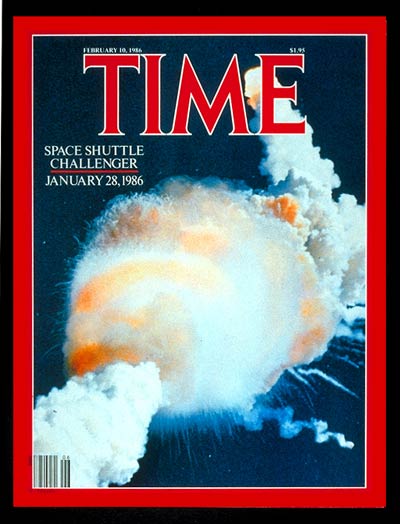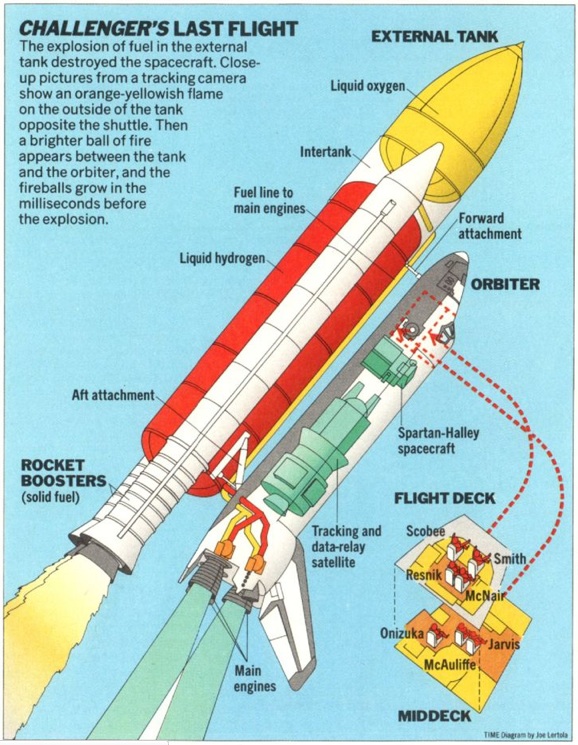
When the Space Shuttle Challenger lifted off on Jan. 28, 1986, space flight was supposed to be safe. As TIME noted in a cover story that ran in the Feb. 10 issue of that year, NASA had spent 25 years sending Americans into space, at an average pace of about twice a year. That aura of safety was part of the reason why Christa McAuliffe, a teacher from New Hampshire, was on board, the first non-astronaut to have that privilege.
It was also part of the reason why what happened to the Challenger on that day was so shocking. As the nation watched live, “McAuliffe and six astronauts had disappeared in an orange- and-white fireball nine miles above the Atlantic Ocean,” TIME reported. “So too had the space shuttle Challenger, the trusted $1.2 billion workhorse on which they had been riding.”
What went wrong?
It was not immediately clear why things had turned sour, even as the launch procedure seemed to be going perfectly. But, as TIME explained in the diagram below, which ran with a story in that issue about how NASA was investigating the disaster, the what was a fire that started in an external fuel tank:

Read the full cover story, as well as obituaries of each of the seven crew members, here in the TIME Vault:
Space Shuttle Challenger
More Must-Reads From TIME
- Dua Lipa Manifested All of This
- Exclusive: Google Workers Revolt Over $1.2 Billion Contract With Israel
- Stop Looking for Your Forever Home
- The Sympathizer Counters 50 Years of Hollywood Vietnam War Narratives
- The Bliss of Seeing the Eclipse From Cleveland
- Hormonal Birth Control Doesn’t Deserve Its Bad Reputation
- The Best TV Shows to Watch on Peacock
- Want Weekly Recs on What to Watch, Read, and More? Sign Up for Worth Your Time
Write to Lily Rothman at lily.rothman@time.com